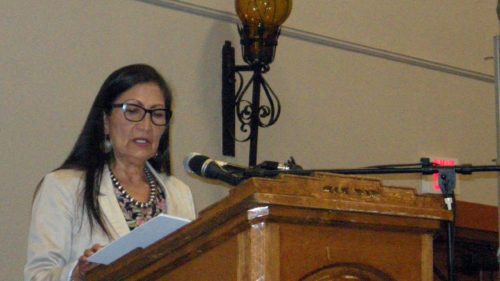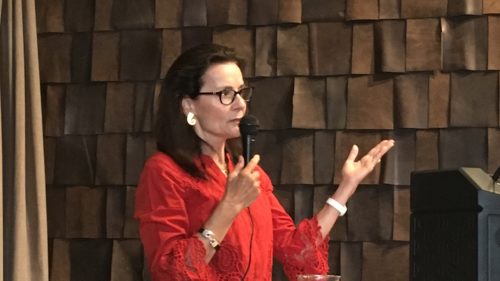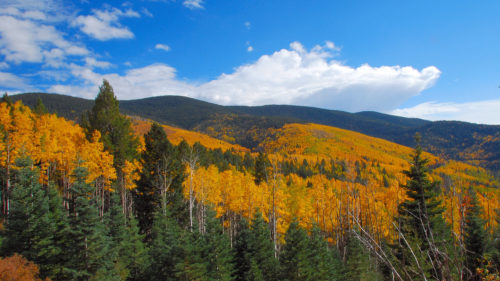For immediate release
LAS CRUCES – New Mexicans across the state are condemning the U.S. House Natural Resources Committee for moving forward a bill that would undermine the authority of the Antiquities Act. If signed into law, the “National Monument Creation and Protection Act” (H.R. 3990) would block presidents from using the Act to establish new national monuments and give authority to the president to remove protections for millions of acres of protected lands. Congressman Steve Pearce (NM-2), a member of the natural resources committee, disappointingly voted in favor of the bill, which could potentially go to a full vote in the U.S. House of Representatives.
In addition to designation of Río Grande del Norte and Organ Mountains-Desert Peaks monument in recent years, some of New Mexico’s most treasured places were protected through the use of the Antiquities Act. This includes White Sands National Monument, Carlsbad Caverns National Park, Chaco Culture National Historical Park, and Kasha-Katuwe Tent Rocks National Monument.
“Congressman Steve Pearce is disrespecting our community and his constituents in voting to gut the Antiquities Act and to give the Executive Branch the authority to reduce our national monuments,” said Carrie Hamblen, CEO/President of the Las Cruces Green Chamber of Commerce. “Pearce’s actions disregard the will of our community’s elected officials, veterans, business owners, sportsmen, tribes, Latino leaders, faith leaders, and many others.”
Rep. Pearce’s support for the bill is out of touch with what New Mexicans want. During the Trump administration’s national monument review, over 2.8 million public comments were submitted to the Department of Interior, 99 percent of which were in favor of preserving or expanding our national monuments. Of the more than 100,000 New Mexican comments submitted, 94 percent supported the continued protection of New Mexico’s national monuments.
Gabe Vasquez, Southern New Mexico Outreach Coordinator for the New Mexico Wildlife Federation added, “The wise use of our natural resources should not be up for political debate. Our unique public lands, including places protected by the Antiquities Act, hold critical wildlife habitat and corridors, vast recreation opportunities, and tells the story of thousands of years of natural and human history New Mexico. It is foolish and misguided for Representative Pearce to vote against the will of the vast majority of New Mexicans and undercut a law that has preserved incredible places within the Land of Enchantment.”
New Mexico broke record tourism numbers again in 2016, with public lands being one of the largest draws for visitors to the state This includes national monuments and other areas that were first protected through the use of the Antiquities Act.
“Organ Mountains-Desert Peaks National Monument is a popular spot for visitors to hike and explore the outdoors. Since the monument’s designation, we have seen a 150 percent increase in interest in the Organ Mountains on our website and the number continues to increase each year. As the catalyst for the area’s hospitality industry, we see Organ Mountains-Desert Peaks as one of the key components to our ‘Monuments to Main Street’ month in September. When visitors stay in our hotels, they are contributing to our lodgers’ tax, spending money in our community, and telling others about our wonderful area,” added Chris Faivre, Director of Marketing and Communications for the Las Cruces Convention and Visitors Bureau.
In addition to the recently designated Río Grande del Norte and Organ Mountains-Desert Peaks National Monuments, previously protected places are an integral part of the engines that drive the local economies:
Chaco Culture National Historical Park (First designated in 1907)
In 2016, there were 54,083 park visitors who spent $3.0 million in local communities while visiting the national historical park. These visits supported a total of 46 jobs, and generated $3.6 million in economic output in local gateway economies surrounding Chaco Culture National Historical Park.
Carlsbad Caverns National Park (First designated in 1923)
In 2016, there were 466,772 visitors to Carlsbad Caverns National Park in who spent $30.1 million in communities near the park. That spending supported 444 local jobs and had a cumulative benefit to the local economy of $33.8 million.
White Sands National Monument (First designated in 1933)
In 2015, there were 497,506 visitors to White Sands National Monument who spent $25,729,300 in communities near the park. That spending supported 387 jobs in the local area and had a cumulative benefit to the local economy of $29,352,100.
Río Grande del Norte National Monument (Designated in 2013)
The Rio Grande del Norte National Monument designation has been good for business in Taos County. According to the New Mexico Green Chamber of Commerce, visitors and revenue increased within a year after the monument designation:
- A 40% increase in visitors in less than one year since the Rio Grande del Norte National Monument designation
- A 21% increase in revenue from the Town of Taos lodgers’ Tax
- An 8.3% increase in gross receipts revenue from the “Accommodations and Food Service” sector in Taos County
Organ Mountains-Desert Peaks National Monument (Designated in 2014)
- Visits to the monument doubled between 2015 and 2016
- More people are choosing to live and work near the monument thanks to its natural and cultural assets. In fact, a recent Headwaters Economics analysisfound the population in the communities neighboring Organ Mountains-Desert Peaks had grown by 21 percent and that personal income had increased by 42 percent from 2001 to 2015. Additionally, it found that service jobs, such as doctors, engineers, and teachers, increased 41 percent in that period.
- New businesses specifically based on branding and tourism in the national monument have sprung up in surrounding communities and pre-existing businesses have expanded their products and services.
- Southern New Mexico was recently included in Lonely Planet’s “Top 10 Places to Visit,” due in large part to the Organ Mountains-Desert Peaks National Monument
In addition to contributing to New Mexico’s growing economy, the places preserved through the use of the Antiquities Act are living, breathing museums where visitors can learn about New Mexico’s natural, cultural, and historical heritage.
“Hispano and Latino leaders came together and worked for years with many other constituencies on behalf of our newly-established national monuments, including the Rio Grande del Norte and Organ Mountains-Desert Peaks national monuments in New Mexico,” said Ralph Arellanes, New Mexico State Director for the League of United Latin American Citizens (LULAC). “It would do a tremendous disservice to our nation if any of these monuments were to be rescinded or altered.”
H.R. 3990 could potentially be voted on by the full House of Representatives. We urge people who do not want to see the Antiquities Act weakened or public lands removed from New Mexico’s national monuments to contact their Congressional representative and urge that they oppose H.R. 3990.



